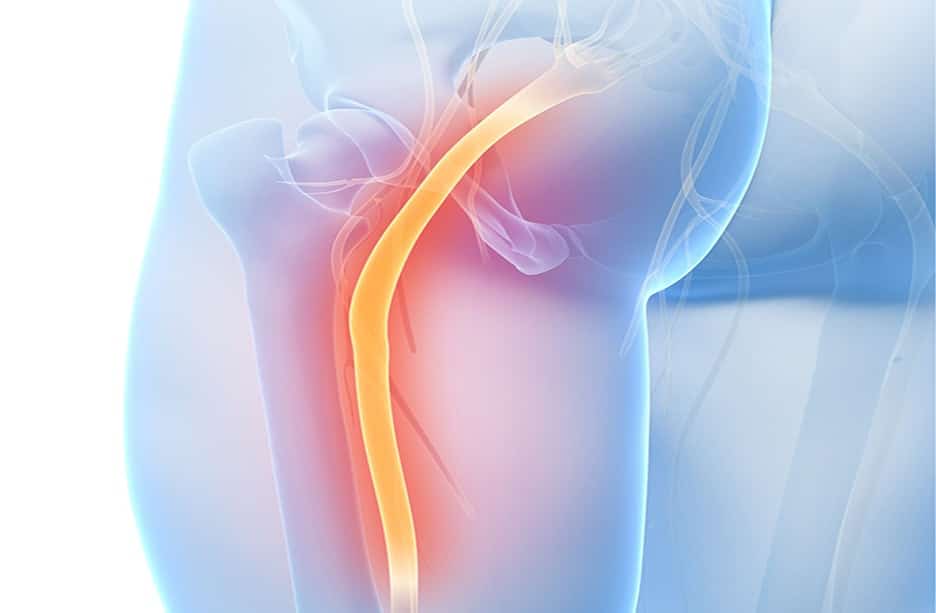Sciatic nerve pain (sciatica) is described as a type of lower back pain. This pain travels down to the thighs. Additionally, it affects thousands of people every year. A common complaint in private practice with annoying symptoms that interfere with people’s lives and daily activities. Lower back pain often accompanies sciatica pain, but not every time. Sciatic nerve pain is described as a burning sensation that spreads down through all of the areas surrounding the Sciatic nerve.
Patients experiencing sciatica often feel tingling and numbness in the affected limb, and the pain may extend to the knee and near the foot, which is the anatomic distribution of the sciatic nerve. This nervous compromise is usually the result of a herniated disc, but it can also be caused by muscle spasm or ligament hypertrophy. So, what else should you understand about the pain?
5 things that you need to know about Sciatica:
1. How long will sciatica pain last?
It is uncommon to find patients with sciatic nerve pain that lasts more than 15 days. What’s more, only 14% of patients with sciatica report pain for more than two weeks. In some cases, the pain is relieved with no medical indications or treatment, and the maximum time elapsed before the pain goes away is less than two months. However, you should readily look for medical assistance if you have difficulty moving your legs or if you feel they are not responding properly.
2. How important are imaging tests in sciatica pain?
If you are feeling this type of pain, you don’t need every single imaging test. For example, plain x-ray images are not used to diagnose disc herniation, which is the most common cause of sciatic nerve pain. The most useful test for patients with sciatica is Magnetic Resonance Imaging (MRI.) This provides a complete and detailed look at the lumbar and sacral regions of the spine along with the associated nerves, tendons, and ligaments. The MRI can help in diagnosing disc degeneration and herniation, among other causes of sciatica pain.
3. Which is the best treatment option for sciatica?
Over-the-counter anti-inflammatories and acetaminophen are the first choices to treat sciatic pain. Several studies have demonstrated their effectiveness. Sometimes doctors would also prescribe a muscle relaxant without sedative effects to further relieve the cause of the pain. However, when the pain is severe and lasts longer than normal, you need to seek a specialist.
4. Should I perform any physical activity?
Laying down in bed for more than two days does no good for patients with sciatic nerve pain. It’s essential that the muscles, ligaments, tendons, and nerves be strengthened. Light exercise with stretching and physical therapy is the best way to recover from the pain and prevent future episodes. As the symptoms subside, your doctor will prescribe exercises to strengthen those areas.
5. Are there any warning signs of sciatica?
You should be careful and look for immediate medical assistance if you experience one of the following signs:
- Difficulty in urinating.
- Numbness, tingling, and burning pain in both legs.
- Numbness in the buttocks, the genitals, and their surrounding area.
- Fever.
- Weight loss.
- Cancer or steroid treatment in your medical records.
If you are experiencing sciatic nerve pain without relief, call us at 888-409-8006.







Leave A Comment